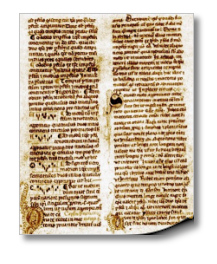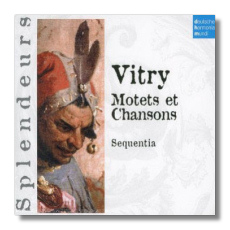
The Internet's Premier Classical Music Source
Related Links
-
Find CDs & Downloads
Amazon - UK - Germany - Canada - France - Japan
ArkivMusic - CD Universe
Find DVDs & Blu-ray
Amazon - UK - Germany - Canada - France - Japan
ArkivMusic-Video Universe
Find Scores & Sheet Music
Sheet Music Plus -
Recommended Links
Site News
Philippe de Vitry

(1291 - 1361)
Philippe de Vitry (October 31, 1291 - June 9, 1361) was one of the most prominent figures in medieval music. Not only do we know of his existence, but the dates of his birth and death are relatively certain – something which cannot be said even for much more recent composers of some renown. Vitry was the author of an important music theory text, Ars Nova, which has been taken up as the name of that entire period of music history. In the Ars Nova, Vitry is primarily concerned with expanding the rhythmic resources offered to composers; he introduces new rhythmic schemes, along with a new mensural notation which was to play an important role for more than a hundred years after his death. The main result of his innovations is that the different lines of polyphony are given much greater independence than had been done previously – during the so-called Ars Antiqua. These new rhythms included, quite significantly, the emancipation of binary rhythm which was considered not only "imperfect" but musically impossible until this time; for us, such a situation is certainly hard to believe. At any rate, Vitry was known as one of the greatest intellectuals of his time and is credited with profound knowledge in mathematics, philosophy, and rhetoric.
Vitry is credited with a large role in the development of the motet. In this regard, he prefigures Machaut in the use of isorhythm (a single rhythmic figure continually repeated by a voice), though his use of isorhythm is more isolated in that it is used at certain points in the motet in order to articulate phrases and structural elements, rather than as a pervasive. Vitry's use of rhythm occupies an intermediate place between the older style exemplified by Perotin in which voices show little rhythmic independence (instead operating as a kind of decorated monody in which chordal progression give a kaleidoscopic effect), and the more modern style of Guillaume de Machaut in which rhythmic devices are integral to a composition. Ironically, Vitry's use of rhythmic relations between the voices is more complex in itself than either of these two examples: Machaut returns to a situation in which strict ratios (like 2:1) determine relationships between voices, whereas Vitry uses more complex relationships (given in the New Grove as algebraic equations) calculated to provided intersection and support of lines at certain structural points of the motet. In many ways, this more complex mathematical construction presents a more simple musical situation in that, at times, the voices are linked together and one is more in the stylistic world of Perotin. In Vitry's music, the tenor is no longer constrained simply to hold long notes as a foundation to the music, but rather is given a unifying structural role in the way that other voices relate (and change in relation) to it; there is also a more convincing use of multiple voices: at times up to four. These last two points are original for music on the continent, though there is some precedence in English motets of the previous century as well as evidence that Vitry had connections with English composers. So, Vitry's music provides much of the new technical means (as well as the specific written means in the Ars Nova) which would lead to the increased melodic invention and cosmopolitan subtlety of the following generations of composers, from Machaut to Guillaume Dufay.
Though we do know something about Philippe de Vitry's life and his positions at the French court, less is known about his actual compositions. The only surviving works (some with greater evidence of authenticity than others) are motets. These motets are primarily secular in nature – though a few use religious texts. However, they are mostly on political rather than romantic subjects. Vitry also uses Latin for his secular works, rather than French as had become standard (and Machaut returns to French in his chansons). One sees him here as an intellectual, expressing the issues of his day in musical form. In addition, these motets use two simultaneous texts (as do similar works of Machaut); this is one of their most interesting features. Much of Vitry's skill in this regard is his ability to set both texts so that they are comprehensible – this is done by rests at important points, as well as the structual integration previously described. One finds a direct sensitivity to the text in these works; the text is the primary determinate of the form, and all the resources employed are devoted to articulation. In this regard, one finds more in common with the later madrigal than with the motets of the early Renaissance. Vitry was a singular genius who found new modes of expression that would not be fully refined until many years after his death. Interestingly, the nature of the music suggests that his motivation for the new style may well have been in rhetoric, rather than musical expression per se. ~ Todd McComb














